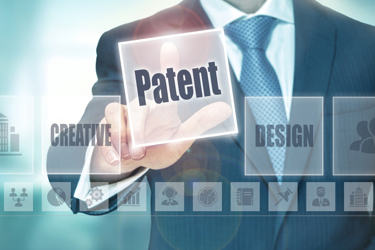3 Successful Strategies For Patenting Diagnostic Technologies
By Michael B. Harlin, Olivia Luk Bedi, and Andrew C. Wood, Neal Gerber Eisenberg

Over the past decade, the Supreme Court has made the formerly simple analysis of patent eligibility into a complex mixture of hard-to-reconcile precedents. The Supreme Court’s Mayo and Myriad opinions regarding the eligibility of life science technologies have confounded lower courts, the Patent Office, and inventors and their attorneys, thereby creating a widely held belief that obtaining patents for diagnostics is an uphill, sometimes hopeless battle. However, a close reading of court decisions regarding such subject matter since Mayo and Myriad shows there are several useful strategies for patenting inventions that involve the laboratory methods, equipment, and reagents used for diagnostics. Much of, if not most, valuable technology underlying diagnostics is patentable if described and claimed correctly, taking care to explain how various steps or parameters are selected or engineered, or how a natural phenomenon or product of nature is integrated into a device or system.
Analytical Framework
The Supreme Court set forth a two-part test in Mayo (and spelled it out further in Alice Corp. v. CLS Bank Int’l) to determine if claimed subject matter was ineligible under 35 U.S.C. § 101.1 In the first step, one considers whether the claim is “directed to” a natural phenomenon. If it is, then the second step asks whether the limitations of the claim apart from the natural phenomenon, considered individually and as an ordered combination, “transform the nature of the claim into a patent-eligible application.” If the answer to step one is “no,” or if the answers to both steps one and two are “yes,” then the claim is eligible for patenting; otherwise, the claim is invalid under Section 101. Although this sounds straightforward, it has proved confusing and difficult to apply. “The law, as I shall explain, renders it near impossible to know with any certainty whether the invention is or is not patent eligible.”2
The Patent Office has extensively and thoughtfully analyzed legal precedents it is required to follow and attempted to harmonize and synopsize those precedents.3 Its guidance sets forth complicated analytical procedures with multiple steps and prongs, in an attempt to synthesize the approaches of various courts and panels of judges. Most of the precedents are less detailed in explaining their analytical procedure than the office’s guidance, and the Federal Circuit has emphasized that the office’s guidance does not have the force of law.4 Nonetheless, from careful consideration of the courts’ decisions and the Patent Office’s guidance, several strategies emerge for getting patents issued by the office and upheld by the courts.
1. Draft Your Claim To A Laboratory Technique Rather Than A Diagnostic Correlation
Drafting the claim to a laboratory technique rather than a diagnostic technique is a good strategy, as it focuses the drafter on the physical steps and compositions rather than the abstract linkage between a test result and a disease. If the correlation can be left out of the claim, then eligibility should not be an issue. The trade-off is finding other elements to establish novelty and inventiveness.
For instance, in Rapid Litig. Mgmt. Ltd. v. CellzDirect, Inc.,5 the court deemed the claims as directed to a method of preserving hepatocytes through freezing rather than to the discovery of a law of nature – that hepatocytes are capable of surviving multiple freeze-thaw cycles. The court also deemed the claims as directed to a laboratory technique for preserving hepatocytes.6 Moreover, the court distinguished the case from those that amounted to nothing more than observing or identifying the ineligible concept itself.7
In Illumina, Inc. v. Ariosa Diagnostics, Inc.,8 the court announced, “This is not a diagnostic case. And it is not a method of treatment case. It is a method of preparation case.” The court was persuaded that separating cell-free DNA based on its size was enough to give a different result than Ariosa Diagnostics, Inc. v. Sequenom, Inc.,9 where the fundamental discovery of cell-free fetal DNA was held to be a natural phenomenon. In Ariosa, the claims were directed to a method “for detecting a paternally inherited nucleic acid” or a method “for performing a prenatal diagnosis.”10 The claims were invalid because they were directed to detecting a natural phenomenon; the court found that the inventors discovered that cell-free fetal DNA exists and the claims only covered that knowledge and steps to see that it exists.11 Conversely, in Illumina, the claims were valid because they covered a process for selective removal of non-fetal DNA to enrich a mixture in fetal DNA.12
CellzDirect and Illumina show that drafting a claim to a method of preparation is a potentially winning strategy. These method-of-preparation claims refrained from reciting a correlation between a test result and a condition; in other words, they did not explicitly recite a law of nature or natural phenomenon. This is consistent with the Patent Office’s guidance, which shows that the recitation of a diagnostic correlation raises an eligibility issue, yet a broader claim omitting that correlation was free of that issue.13 These method-of-preparation claims also included concrete steps performed on biological samples and resulting in a material product (a preparation of cryopreserved hepatocytes, or a DNA fraction with fragments less than approximately 500 base pairs). Thus, when drafting a diagnostic claim, the drafter should avoid including the correlation and instead recite the physical steps and/or products used in the laboratory.
2. Draft Your Claim To Instruments And Equipment
Instruments and hardware designed for diagnostic applications will generally be found patent eligible, though accused infringers will still challenge them as ineligible. DUSA Pharmaceuticals, Inc. v. Biofrontera Inc., and Trustees of Purdue University v. Omron Corp. exemplify the continued availability of patents for equipment used for diagnostic purposes.
DUSA concerned an apparatus and method for diagnosing and/or treating actinic keratosis – skin lesions that can turn cancerous – with multiple light sources configured to provide a uniform output of light at specific distances.14 DUSA, which commercialized the patented invention in the form of a BLU-U photodynamic therapy light, and Levulan, a photosensitizer drug, asserted the underlying patents against Biofrontera.15 At step one of the Alice/Mayo test, Biofrontera argued that the claims were directed to characteristics of light, which it alleged to be an unpatentable natural phenomenon.16 At step two, Biofrontera argued that the claims did not incorporate the higher degree of precision and integration noted in the specification, so they lacked an inventive concept.17 The court rejected these arguments, reasoning at step one that the required uniformity of light was inseparable from the illuminator recited in the claim, and an illuminator engineered to deliver a uniform light source from a specific distance was sufficiently different from natural light to remove the claims from the realm of natural phenomenon.18 The court summarily disposed of Biofrontera’s argument: “[a]lthough the claims relate to light, they are not directed to light as a natural phenomenon.”19 Because DUSA claimed a device that projected a specific area and intensity of light, the court found that the claims were not directed to ineligible subject matter, without having to proceed to step two.
Trustees of Purdue University v. Omron Corp. concerned an oscillometric blood pressure monitor that determined systolic blood pressure (the top number of a blood pressure reading) as a function of maximum oscillation amplitude and mean cuff pressure, as opposed to the traditional function of determining a fixed ratio of the maximum amplitude of the pressure oscillations measured during cuff deflation.20 The court described the invention as “a mathematical improvement to the functionality of a blood pressure monitor . . .,” which would seem to make it directed to an abstract idea.21
In moving to dismiss, Omron argued that the claim was directed to a natural law: that systolic blood pressure can be measured as a function of maximum oscillation amplitude and mean cutoff pressure.22 Omron also emphasized that the only innovation in the patent was the mathematical relation of maximum oscillation amplitude and mean cuff pressure as pertaining to blood pressure.23 The court rejected these arguments, finding that even though the claims involved a mathematical idea, they were directed to an improvement upon an existing medical device and process, like the claims in CellzDirect and Enfish, LLC v. Microsoft Corp.24
Purdue and DUSA demonstrate the lesser scrutiny courts tend to apply in their subject matter eligibility analysis where an apparatus is the subject of analysis. Although the courts have disavowed the “machine-or-transformation” test used by the courts before Bilski25, a claim to an instrument more specific than a general-purpose computer is likely to be found patent eligible. These cases support the value of drafting apparatus claims for an invention that appears to be at risk of a subject matter eligibility challenge. Thus, a promising strategy is to draft claims to a device, system, or apparatus, even if the components are not new themselves but are used to perform a novel step or calculation.
3. Involve Your Reagent(s) In Your Draft Claim
Another strategy involves the reagents necessary to practice a diagnostic method. Athena Diagnostics, Inc. v. Mayo Collaborative Services26 and the Patent Office’s examples illustrate how this strategy might be used. However, Athena also illustrates how an applicant may misstep in claiming and describing her invention.
Athena Diagnostics concerned a method for diagnosing myasthenia gravis (MG), a chronic autoimmune disorder, in a group of patients by testing whether the patient has autoantibodies to MuSK.27 The test involved introducing a radioactively labeled MuSK specimen (I-MuSK) to a sample of bodily fluid.28 In patients affected with a specific type of MG, the patient’s IgG antibodies would bind to the radioactively labeled IgG-MuSK complex, which could be detected following immunoprecipitation.29 Athena accused Mayo of developing infringing tests and Mayo moved to dismiss on the ground that the patent was directed to ineligible subject matter.30 Mayo argued the claims were directed to a natural phenomenon: the correlation between the naturally occurring MuSK autoantibodies in a person’s bodily fluid, and that person having MG. Athena responded that the claims were not directed to ineligible subject matter, especially claim 9, which expressly required the use of a non-naturally occurring reagent: I-MuSK.31 The district court rejected this argument, however, reasoning that the claims were directed to a method for diagnosis of a disease, not to the creation of the synthetic I-MuSK compound.32 At step two, the district court noted that the specification stated the addition of as a radioactive label was a standard practice, as was immunoprecipitation; based on the applicant’s own specification, the court concluded that the claims lacked the necessary inventive step.33
On appeal, the Federal Circuit affirmed, agreeing that the claims were directed to a natural law: the correlation between the presence of naturally occurring MuSK autoantibodies and diseases like MG.34 At step two, the court found that the patent specification did not disclose anything beyond standard technology and techniques and reasoned that the application of conventional techniques to detect the natural law correlation between MuSK antibodies and MG could not constitute an inventive step, regardless of the use of the man-made I-MuSK molecule.35
Athena was especially concerning because the court placed little or no weight on the synthetic I-MuSK reagent in analyzing eligibility of the diagnostic method. However, the Athena court’s reasoning illustrates the potential strategy of focusing on a novel reagent for a diagnostic method. It is possible that, had Athena claimed the I-MuSK reagent and/or methods for producing it, such claims would have survived the court’s invalidation. Furthermore, if Athena had refrained from making an admission in its specification that immunoprecipitation and labeling were “standard techniques in the art,” it might have had an argument that developing the I-MuSK reagent provided the inventive concept sufficient to make the claimed method eligible.
In fact, the Patent Office’s subject matter eligibility guidance indicates that claims reciting unconventional reagents are more likely to be deemed patent-eligible. Claims 3 and 4 of Example 29 explain that the use of certain reagents – a particular man-made murine antibody (claim 4) or porcine antibodies previously used only in non-human applications (claim 3) – in a diagnostic method can transform the natural phenomenon into a practical application.36 The office’s rationale explains that even though the reagents were not novel, neither the specific antibody mAb-D33 nor porcine antibodies in general were routinely used to detect human proteins.37 Although at first this appears inconsistent with Athena, it actually demonstrates the importance of properly describing the invention and its implementation. The use of unconventional (though not necessarily novel) reagents may be the basis for eligibility for applicants seeking to obtain patent protection for diagnostic innovations.
Conclusion
Although it is certainly much more difficult to patent inventions for diagnostics, there are opportunities to obtain patents for laboratory preparations, instruments, and reagents used to perform diagnostic testing. Careful analysis of an invention in light of the current state of the law can reveal several potential strategies for successful patenting. Contact the authors of this article with additional questions.
About The Authors:
 Michael B. Harlin is a partner at Neal Gerber Eisenberg, a Chicago-based law firm. A patent attorney in the firm’s Intellectual Property practice group, Mike assists clients in protecting their complex technologies through patent counseling, prosecution, transactions, license and transfer negotiations, opinion preparation, and adversarial proceedings before administrative agencies and courts throughout the country. His chemistry background enables him to develop patent portfolios for life sciences products, including pharmaceuticals, biologics, diagnostics, genetics, and laboratory instruments. Mike also provides counsel on major acquisitions and collaborations involving risk assessments and agreements, including IP, corporate, antitrust, and regulatory components.
Michael B. Harlin is a partner at Neal Gerber Eisenberg, a Chicago-based law firm. A patent attorney in the firm’s Intellectual Property practice group, Mike assists clients in protecting their complex technologies through patent counseling, prosecution, transactions, license and transfer negotiations, opinion preparation, and adversarial proceedings before administrative agencies and courts throughout the country. His chemistry background enables him to develop patent portfolios for life sciences products, including pharmaceuticals, biologics, diagnostics, genetics, and laboratory instruments. Mike also provides counsel on major acquisitions and collaborations involving risk assessments and agreements, including IP, corporate, antitrust, and regulatory components.
 Olivia Luk Bedi is a partner at Neal Gerber Eisenberg, a Chicago-based law firm. A civil litigator and patent lawyer in the firm’s Intellectual Property practice group, Olivia represents both corporations and individuals in complex technological matters. Specifically, she helps her clients protect, enforce, and defend their intellectual property rights, including patents, trade secrets, copyrights, and trademarks. With considerable experience as a trial lawyer, Olivia litigates and tries significant cases before district and federal courts. Before practicing law, Olivia served as a patent examiner for the USPTO, gaining extensive insight into agency procedures.
Olivia Luk Bedi is a partner at Neal Gerber Eisenberg, a Chicago-based law firm. A civil litigator and patent lawyer in the firm’s Intellectual Property practice group, Olivia represents both corporations and individuals in complex technological matters. Specifically, she helps her clients protect, enforce, and defend their intellectual property rights, including patents, trade secrets, copyrights, and trademarks. With considerable experience as a trial lawyer, Olivia litigates and tries significant cases before district and federal courts. Before practicing law, Olivia served as a patent examiner for the USPTO, gaining extensive insight into agency procedures.
 Andrew C. Wood is an associate at Neal Gerber Eisenberg, a Chicago-based law firm. Andrew’s practice focuses on patent and trademark litigation, legal opinions, and patent portfolio management. He drafts briefs, oppositions, and opinion letters; takes depositions; and assists in all phases of pre-trial discovery and expert discovery. Andrew handles litigation in both federal and circuit courts, which involves drafting patent owner responses, motions, and declarations for inter partes review proceedings before the USPTO. Applying his technological background, Andrew provides counsel on pharmaceuticals, medical devices, manufacturing processes, food & beverage packaging, and GPS electronics.
Andrew C. Wood is an associate at Neal Gerber Eisenberg, a Chicago-based law firm. Andrew’s practice focuses on patent and trademark litigation, legal opinions, and patent portfolio management. He drafts briefs, oppositions, and opinion letters; takes depositions; and assists in all phases of pre-trial discovery and expert discovery. Andrew handles litigation in both federal and circuit courts, which involves drafting patent owner responses, motions, and declarations for inter partes review proceedings before the USPTO. Applying his technological background, Andrew provides counsel on pharmaceuticals, medical devices, manufacturing processes, food & beverage packaging, and GPS electronics.
- See Mayo Collaborative Servs. v. Prometheus Labs., Inc., 566 U.S. 66 (2012); Alice Corp. v. CLS Bank Int’l, 573 U.S. 208 (2014).
- Interval Licensing LLC v. AOL, Inc., 896 F.3d 1335, 1348 (Fed Cir. 2018) (Plager, J., concurring-in-part and dissenting-in-part).
- See Manual of Patent Examining Procedure, § 2106; see also Subject Matter Eligibility Examples: Life Sciences May 2016 at pp 70–77, available at https://www.uspto.gov/sites/default/files/documents/101_examples_1to36.pdf (hereinafter, “USPTO Subject Matter Eligibility Example”); and Appendix 1 to the October 2019 Update: Subject Matter Eligibility: Life Science & Data Processing Examples.
- See In re Rudy, 956 F.3d 1379, 1383 (Fed. Cir. 2020) (“Accordingly, we apply our law and the relevant Supreme Court precedent, not the Office Guidance, when analyzing subject matter eligibility. To the extent the Office Guidance contradicts or does not fully accord with our caselaw, it is our caselaw, and the Supreme Court precedent it is based upon, that must control.”).
- 827 F.3d 1042 (Fed. Cir. 2016).
- Id. at 1048.
- Id.
- 967 F.3d 1319, 1325 (Fed. Cir. 2020).
- 788 F.3d 1371 (Fed. Cir. 2015).
- Id. at 1373–74.
- Id. at 1376–77.
- Illumina, 967 F.3d at 1327–28.
- See USPTO Subject Matter Eligibility Example.
- DUSA Pharms., Inc. v. Biofrontera Inc., 495 F. Supp. 3d 21, 24–25 (D. Mass. 2020). The apparatus and method claims respectively claimed:
1. An illuminator for diagnosing or treating a patient, comprising:
a plurality of light sources configurable in a spaced relationship to a patient to treat or diagnose a dermatological condition,
a controller, connected to the plurality of light sources, to control the light sources,
wherein the light sources are configured and controlled to provide a uniform output of light to the patient to treat or diagnose a dermatological condition,
the light sources being configured and controlled such that uniform output of light is provided when measured at distances of 2” and 4”. U.S. Patent No. 9,723,991 at claim 1.
1. A method of photodynamically diagnosing or treating a patient, comprising:
illuminating the patient with an illuminator whose measured output over an active emitting area is at least 60% of the measured maximum over all operation distances. U.S. Patent No. 8,216,289 at claim 1.
- DUSA Pharms, 495 F. Supp. 3d at 25.
- Id. at 28.
- Id.
- Id. at 28–29.
- Id. at 28.
- See No. 20-cv-5443, 2020 U.S. Dist. LEXIS 228056, *2–*3 (N.D. Ill. Dec. 4, 2020). Specifically, the apparatus claim recited:
1. An oscillometric, noninvasive blood pressure monitor, comprising:
an inflatable cuff;
a pump connected to said cuff;
a pressure transducer connected to said cuff, said pressure transducer producing a cuff-pressure signal;
means for detecting oscillations in arterial pressure occurring during a transition in cuff pressure between a pressure greater than normal systolic pressure and a pressure less than normal diastolic pressure; and
a blood pressure measurement circuit responsive to said oscillations, said circuit determining the maximum amplitude Am of said oscillations, identifying mean cuff pressure Pm as the coincident value of said cuff-pressure signal, and determining systolic pressure as a function of both Am and Pm. U.S. Patent No. 7,014,611 at claim 1.
- Id. at *10–*11.
- Id. at *9.
- Id.
- Id. at *10–*13. See also Enfish, 822 F.3d 1327, 1335–39 (Fed. Cir. 2016).
- See Bilski v. Kappos, 561 U.S. 593, 603–06 (2007).
- 275 F. Supp. 3d 306 (D. Mass. 2017), aff’d 915 F.3d 743 (Fed. Cir. 2019).
- Id. at 307. Specifically, the broadest claim recited:
1. A method for diagnosing neurotransmission or developmental disorders related to a muscle specific tyrosine kinase (MuSK) in a mammal comprising the step of detecting in a bodily fluid of said mammal autoantibodies to an epitope of muscle specific tyrosine kinase (MuSK). U.S. Patent No. 7,267,820 at claim 1.
- 275 F. Supp. at 308.
- Id.
- Id.
- Id. at 308–09.
- Id. at 310–12.
- Id. at 313.
- 915 F.3d at 750–53.
- Id. at 754–55.
- See USPTO Subject Matter Eligibility Example.
- Id. at pp. 74–75.
